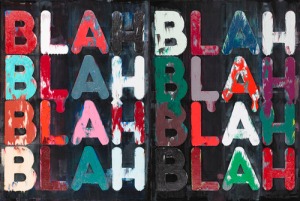
Part I: PersonificationA Lesson by Idiotekque What's personification? An easy tool to make your setting really POP! Read on to find out how to use it! Have you ever written a paragraph of a story you were working on, read it back, and grumbled at how plain, uninspiring, or boring it was? Well, we all have. Even if you’ve got ideas in your head, as great as they might sound inside, sometimes you’ll put them on the screen and completely disappoint yourself. What sounded like an exciting, action packed scene in your mind now looks like a trudging block of exposition. It’s boring.  Don't let your exposition stay looking like this! Well don’t let it get you down. It’s just something that’s going to happen when you’re pounding your thoughts into material. Quite often, even if what you just wrote looks terrible to you, it’s still a vital step in the creative process. It’s extremely important to put your thoughts down in written form. So many “writers” have the story all in their heads! It might be amazing and inspiring and wonderful, but no one can see it. That’s why actually filtering the ideas out of your mind into visible form is so important, but it’s of course only the first step. Let’s go back to that boring block of exposition. Odds are that you’re going to have to dissect it, chop it up, sew it back together, and send a bolt of lightning into it before “It’s alive!” Silly, but truer than you think. Quite often you will have to remove entire sections of writing, even if your productive ego tells you “What are you doing!?” It just feel unnatural and wrong to delete something you put in your story, but trust me, don’t be afraid of it. Often less is far more, and there’s only one way to find out when that’s true. But that still doesn’t say much for energizing that dead chunk of text. If you chop up paragraph cadavers and splice them back together, you’re still using dead word-meat. What do you need next? A bolt of lightning! But where do you find that? Well, there are many viable alternatives to a lightning rod affixed to your roof. Writing is an art, and just as there are a myriad different ways to bring a painting to life, the same can be said when it comes to writing. I’m going to bring out one that I personally like to employ in my work. Personification. What’s that? Well, basically it’s when you take an lifeless, inanimate object, and give it active, even human traits. If you cut eyes and a mouth into your sandwich and make it talk, I suppose that’s personification. Thankfully we can be much more subtle when it comes to writing. How can we do this? Well the best way to explain is with an example. The wind moved the curtains. This sentence of exposition is to the point, but it’s also pretty boring. I think I just yawned. The blackened night exhaled a heavy breath against the curtains as they fluttered in a ghostly dance. Alright, I’ll admit I went a little overboard there, but this looks a lot better, doesn’t it? Looking at those two sentences, why is the second one funner to read? It’s hardly because of the dramatic descriptive adjectives. Don’t believe me? Then let’s strip it bare, leaving only the personifications. The night exhaled a breath against the curtains as they fluttered and danced. It still sounds pretty darn good, doesn’t it? Some would even prefer this version to the last. Why? Well that’s a key point when it comes to personification. A writer can pile on all the fancy adjectives he wants onto his work, but when you overuse adjectives, you’re telling the reader what something is like, you’re not showing them what it’s like. That’s probably the most widely preached mantra of writing: Show, don’t tell.  Maybe this is a bit too literal of a visual aid, but I kind of want middle one's number and to have a brewski with the one on the left. When you utilize a personification as opposed to a handful of adjectives, you’re giving your setting human characteristics. Obviously, any human is going to more fully connect with human characteristics. It hits home harder, and it wraps us up in the scene. You see? That’s a personification right there “It wraps us into to the scene”. Obviously a sentence or paragraph cannot physically wrap around your body, but through use of a personification, your mind immediately grasps the idea behind that phrase and interprets it in a very literal, visceral way. That’s why personifications are so powerful when read. You might not even see them as you read, but they’re there, and they make you keep reading. So now that you understand exactly what personification is, why don’t you try it out? I guarantee that you already use it in your writing, even if you never thought about it before, but now that we are thinking about it, let’s practice and evolve this particular skill. Below is a list of random, lifeless objects. They’re lifeless because they’re not breathing and thinking, but you personally can breathe life into them through personification, and they will repay the favor by breathing life into your story. Wind So take each of these boring, inanimate objects, and use personification to place them each in a sentence that imbues them with life and human characteristics. Remember to make good use of active verbs, not passive ones (like were, had, and was), and for a twist, try to use little to no adjectives in each sentence. Don’t be afraid of using emotion! Just because a mansion can not feel literal sorrow, it can look very sad and alone as it sits atop a dark, cloudy mountaintop, right? Post your practice results in the comments section and let me know how personification works for you! Comments
|
Stats
8865 Views
226 Subscribers Added on December 29, 2011 Last Updated on December 29, 2011
AuthorIdiotekqueMakawao, HIAboutI'm 20 years old and I'm a writing student living in Hawaii. Writing is my passion, and I'm striving to break into the market doing something I really love. |


 Flag Course
Flag Course